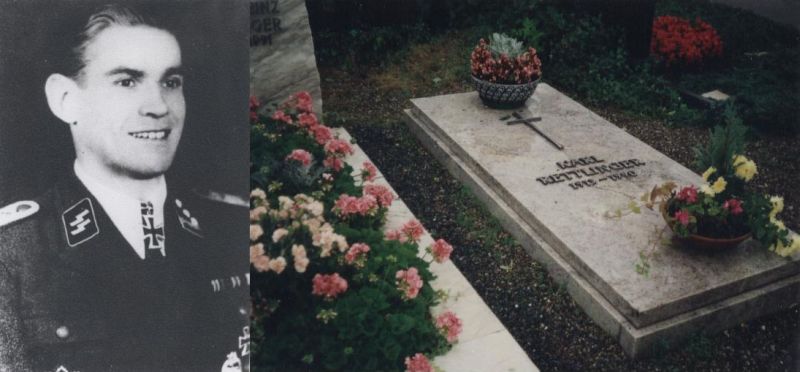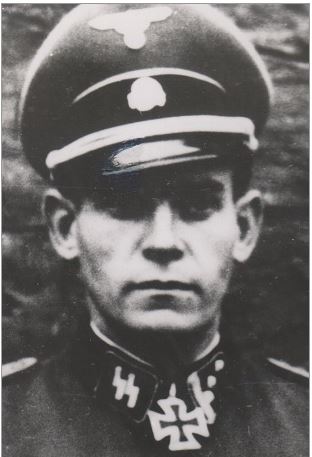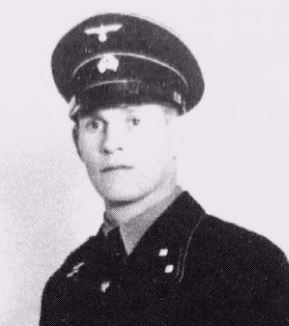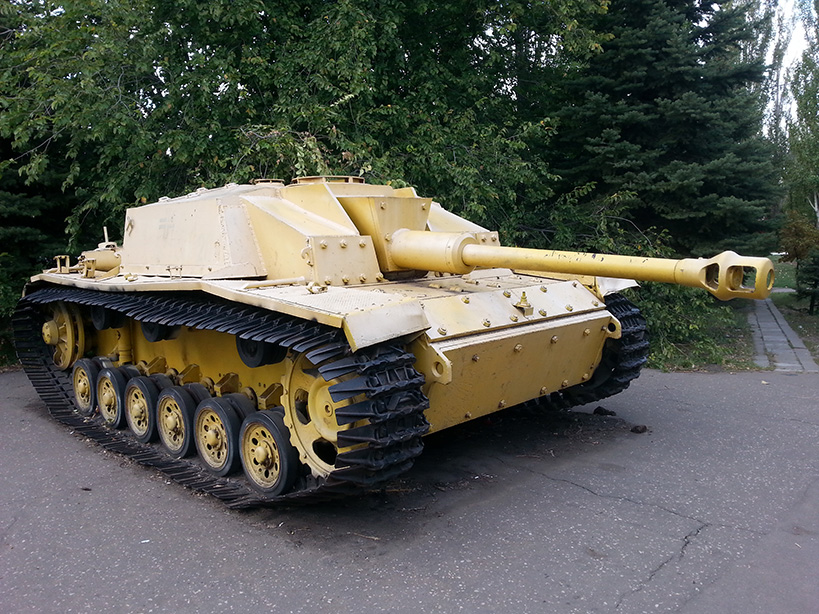Rettlinger, Karl (Waffen SS)
- Date of birth:
- February 8th, 1913 (Gunzenhausen/Mittelfranken, Germany)
- Date of death:
- June 14th, 1990 (Gunzenhausen/Bavaria, Germany)
- Service number:
- SS-Nr.: 21.755 // NSDAP-Nr.: 888.565
- Nationality:
- German
Biography
Promotions:
30.01.1945: SS-Sturmbannführer
Career:
00.11.1933: 4. Kompanie, LAH
Tank ace credited with more than 30 tank kills
Do you have more information about this person? Inform us!
- Period:
- Second World War (1939-1945)
- Awarded on:
- July 12th, 1941
- Period:
- Second World War (1939-1945)
- Period:
- Second World War (1939-1945)
- Awarded on:
- 1942
- Period:
- Second World War (1939-1945)
- Awarded on:
- March 29th, 1943
- Period:
- Second World War (1939-1945)
- Rank:
- SS-Hauptsturmführer (Captain)
- Unit:
- Chef, 3. Batterie, SS-Sturmgeschütz-Abteilung 1, 1. SS-Panzergrenadier-Division 'LSSAH'
- Awarded on:
- April 15th, 1943
- Period:
- Second World War (1939-1945)
- Rank:
- SS-Hauptsturmführer (Captain)
- Unit:
- Chef, 3. Batterie, SS-Sturmgeschütz-Abteilung 1, 1. SS-Panzergrenadier-Division 'LSSAH', 4. Panzer AOK, Heeresgruppe Süd
- Awarded on:
- December 20th, 1943
“1. During the operation "Zitadelle" SS-Hauptsturmführer Rettlinger received the order on the 10.07.1943 to attack on the left of the railway Bjelgorod — Kursk, at Prokhorovka, with his Batterie and the I./2. Pz.Gren.Rgt. The Kampfgruppe was thereby assigned a crucial task to go through the railway and forest, then out of the heavy confines and into the open.
After a short personal investigation, SS-Hauptsturmführer Rettlinger decided to attack immediately. This came to pass and he advanced at full speed with his Batterie behind him, his men moving impetuously and rapidly against the fixed positions. Before the enemy could effectively use their anti-tank guns, they were already driven over, shot up and thereby stopped.
Even with this surprise attack, four assault guns were temporarily unusable through mine damage. The fact that this order was fulfilled was then even more outstanding and by this breach of the enemy defenses the conditions for the following infantry attack were produced.
2. Fighting in the battles of the Division north of Biala Zerkow on the 17.11.1943 was the advance Battalion of the 1. Pz.Gren.Rgt LSSAH, firmly before the Wilnja sector by Woitaschewka. The reconnaissance had determined that 500m north of the river, in the forest, was a strong defensive front with anti-tank guns and dug-in tanks. In view of this defensive front, crossing the bridge would only have been possible with substantial losses to the Kampfgruppe.
SS-Hauptsturmführer Rettlinger was given the order, with his Batterie, to drive to the northeast and conduct reconnaissance. Through amazing and skillful utilization of the ground, making the anti-tank guns ineffective, he succeeded in winning ground to the south of Kotscherowo.
In this locality, he came across approximately thirty enemy tanks. From his reconnaissance raid he determined that speed would be the crucial factor. He skillfully brought his own gun forward, so that it could engage the furthest enemy tank positioned in front of the corn. With his fire order and the destruction of the enemy tank, the attack began. The Batterie attacked and fired from the battle plan of SS-Hauptsturmführer Rettlinger and rolled forward with the highest speed from the area south of Hill 183.5 on towards Kotscherowo. The thirty enemy tanks, who were standing in security positions, were fully surprised by this attack. They savagely fired in all directions and tried to secure an escape route. Six T-34s were shot up, the other tanks managed to escape. SS-Hauptsturmführer Rettlinger, whose own vehicle was damaged by mines, transferred vehicles and broke into the enemy lines at the point of the attack. This place was occupied without further losses.
Clear to be seen in the fighting was the lightning-fast resolution of this outstanding SS-Leader, which took place with heavy support from his troops. The blocking of the important main road Zhitomir-Kiev was only possible because SS-Hauptsturmführer Rettlinger acted immediately, without instruction or hesitation on account of personal safety.
Under his leadership the 3. Sturmgeschütz-Batterie has so far destroyed altogether:
- 65 tanks (60 T-34, 3 T-70 and 2 KV-1)
- 124 heavy Pak (7.62cm), of which SS-Hauptsturmführer Rettlinger personally destroyed 33
- 12 Pak (4.7cm)
- Large quantities of machine-guns and anti-tank rifles
I recommend that SS-Hauptsturmführer Rettlinger be awarded the Knight's Cross to the Iron Cross on account of his outstanding bravery during all fighting days and because of the daring leadership of his Batterie."
- Period:
- Second World War (1939-1945)
Sources
- Photo 1: Norbert Beyerlein
- Photo 2:
- Photo 3:
- Photo: Beyerlein-Sammlung
- - MOONEY, PETER, Waffen-SS Knights and their Battles, Schiffer Publishing, Ltd., 2012.
- Die Ordensträger der Deutschen Wehrmacht (CD), VMD-Verlag GmbH, Osnabrück, 2002
- Fellgiebel W.P., Elite of the Third Reich, The recipients of the Knight's Cross of the Iron Cross 1939-1945: A Reference, Helion & Company Limited, Solihull, 2003, ISBN 1-874622-46-9
- Patzwall K., Scherzer V., Das Deutsche Kreuz 1941-1945, Geschichte und Inhaber Band II, Verlag Klaus D. Patzwall, Norderstedt, 2001, ISBN 3-931533-45-X


















